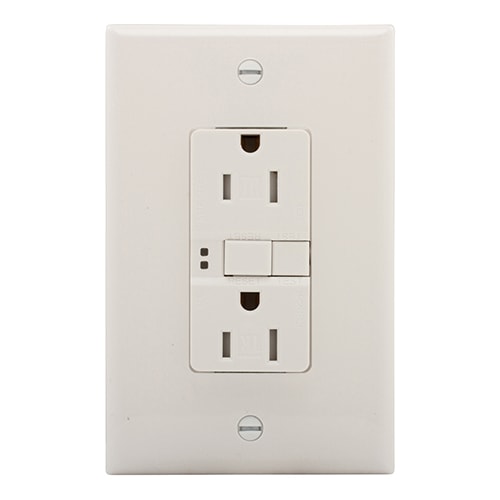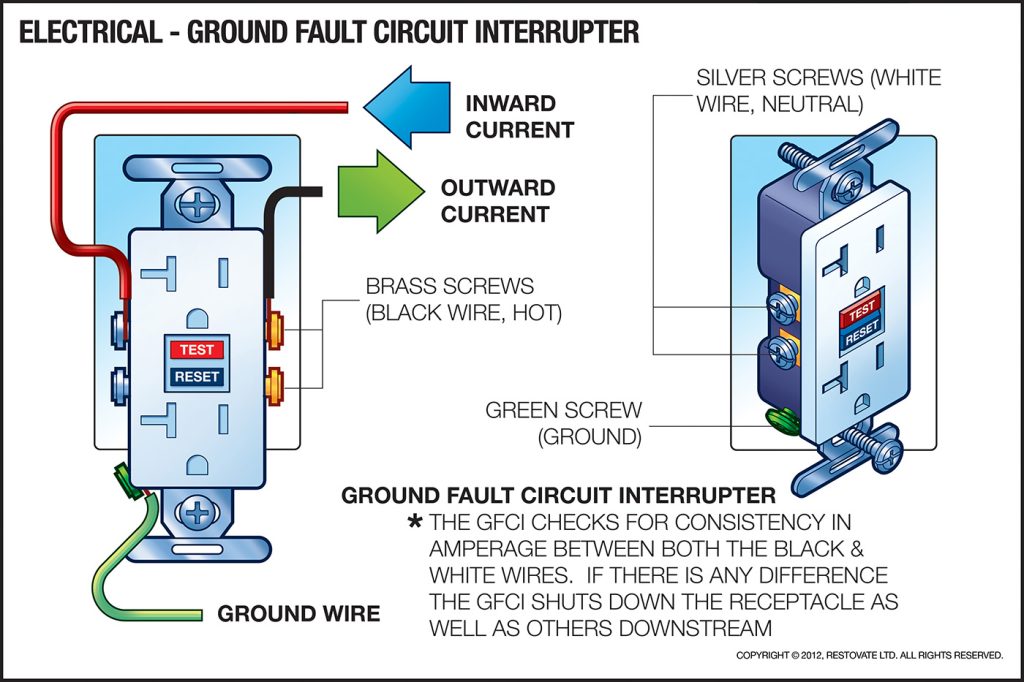Cleaning gutters is one of those chores most homeowners dread—and often put off—but it’s an essential part of protecting your home. Installing gutter guards can significantly cut down on...

Ground Fault Circuit Interrupters (GFCIs)
By Mike Holmes
Mike’s Advice / Bathroom Renovation
Saturday, July 15th, 2023 @ 9:51am
What You Need To Know About GFCIs
A Ground Fault Circuit Interrupter or GFCI is an electrical safety device. It is designed to trip or cut power to electrical circuits by monitoring the amount of current flowing from hot to neutral wiring. GFCIs are not to be confused with fuses or circuit breakers. Here is what you need to know about Ground Fault Circuit Interrupters.
What is a GFCI used for?
If a GFCI detects a difference between the current flowing from hot to neutral wiring, the GFCI will trip and cut the supply of electricity. A ground fault circuit interrupter (GFCI) can help prevent electrocution.
GFCIs are available as breakers or receptacles. Homeowners can tell which receptacles are GFCI protected because they will have a test button and a reset button in the middle of the outlet.
If a GFCI detects a difference between the current flowing from hot to neutral wiring, the GFCI will trip and cut the supply of electricity.
WHAT IS A GROUND FAULT?
A “ground-fault” is an electrical current leak caused by an electrical disturbance. This could be a bare wire inside an appliance touching a metal base. If a person were to touch the appliance with one hand and a grounded metal object (like a water faucet) with the other they would complete the loop and get an electric shock.
However, if the appliance is plugged into a GFCI protected outlet, the GFCI senses the change in current. It will then immediately shut off the power to the circuit. This prevents the electrical leak to use the person as a path towards a grounded surface. It essentially interrupts the circuit caused by the ground-fault.
RELATED: How To Protect Your Home Against Electrical Fires
How do GFCIs work?
The purpose of a GFCI outlet is to prevent electrical injury. This is not something regular outlets will do. A regular outlet in your home features two, three-prong plug-in slots. A GFCI outlet has the same plug-in configuration plus two buttons on its face: a “TEST” button and a “RESET” button.
In some cases, one GFCI receptacle can protect all of the outlets downstream. You’ll find this in bathrooms where one bathroom would have a GFCI receptacle and the other bathrooms would have regular receptacles. When wired correctly all the bathroom receptacles would be GFCI protected.
The GFCI picks up on the difference in the amount of electricity flowing into the circuit to that flowing out, to put it simply. The GFCI reacts quickly (less than one-tenth of a second) to trip or shut off the circuit.
Normally, electrical current flows at a uniform rate through wiring. When a ground fault occurs, the flow of electricity surges as it jumps to the unintended conductor. A GFCI outlet contains a sensor that monitors the flow of the electrical current through the wires, and when it senses a ground fault (in electrical terms, “fault” means any variation from the normal current), the GFCI, which also contains an internal switch, shuts off the flow of electricity in the outlet.
Where should GFCIs be installed?
The National Electric Code (NEC) requires the installation of GFCI outlets in new construction in areas where electrical outlets are close to water. Older homes are not required to have GFCI outlets unless the wiring is being updated. I recommend installing them anyway.

Subtle matte black accents create a simple, modern feel to the bathroom in Holmes Family Rescue.
The NEC requires GFCIs on:
- all exterior and bathroom receptacles
- all receptacles serving kitchen countertops.
- In laundry rooms and utility rooms. GFCIs should be installed on outlets within six feet of sinks, washing machines, and water heaters.
- Within six feet of a wet bar
- In garages and unfinished basements
GFCIs were introduced as codes in the early 1980s to prevent fatal shocks. A GFCI protected outlet must be installed on outdoor outlets, bathroom outlets, kitchen counters, and hot tubs. Simply, anywhere there is the potential for water and electricity to come into contact.
How should GFCIs be tested?
GFCIs are electronic devices that can be damaged over time. If this happens to you, hire a licensed electrician to replace it as soon as possible.
Test your GFCIs monthly. Put this on your home maintenance checklist. Whether you have a receptacle or circuit breaker GFCI, pushing the TEST button should turn off the power to the circuit.
What Is The Difference between AFCI and GFCI?
To put it simply, GFCIs prevent shocks, and AFCIs prevent fires. With Arc fault circuit interrupters (AFCIs) when an arc is detected, power to the circuit is interrupted. AFCI receptacles will recognize an arc fault and quickly trip to stop the flow of electricity. This prevents the electrical system from being an ignition source of a fire.
AFCI circuit breakers and GFCIs complement and work together to provide electrical safety and protect against electrical fires in your home.
RELATED: Read More About AFCIs
What Causes Arcing?
Arcing usually results from a circuit becoming overloaded and overheating. Lots of factors can cause arcing. This includes damaged or worn wires, incorrect wiring, and loose or wet connections.
READ NEXT:
Renovating? Here is What You Need To Know About Your Electrical









